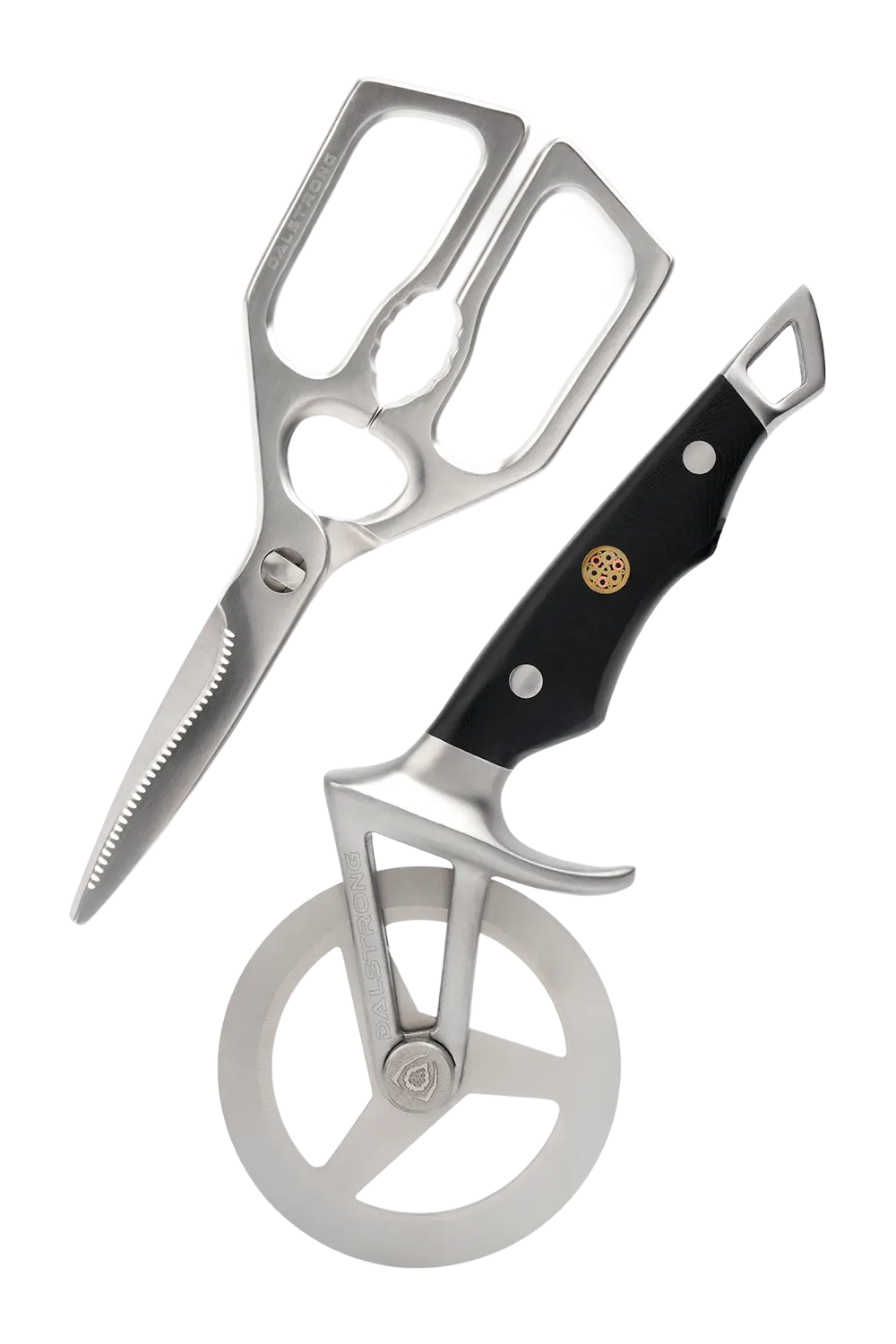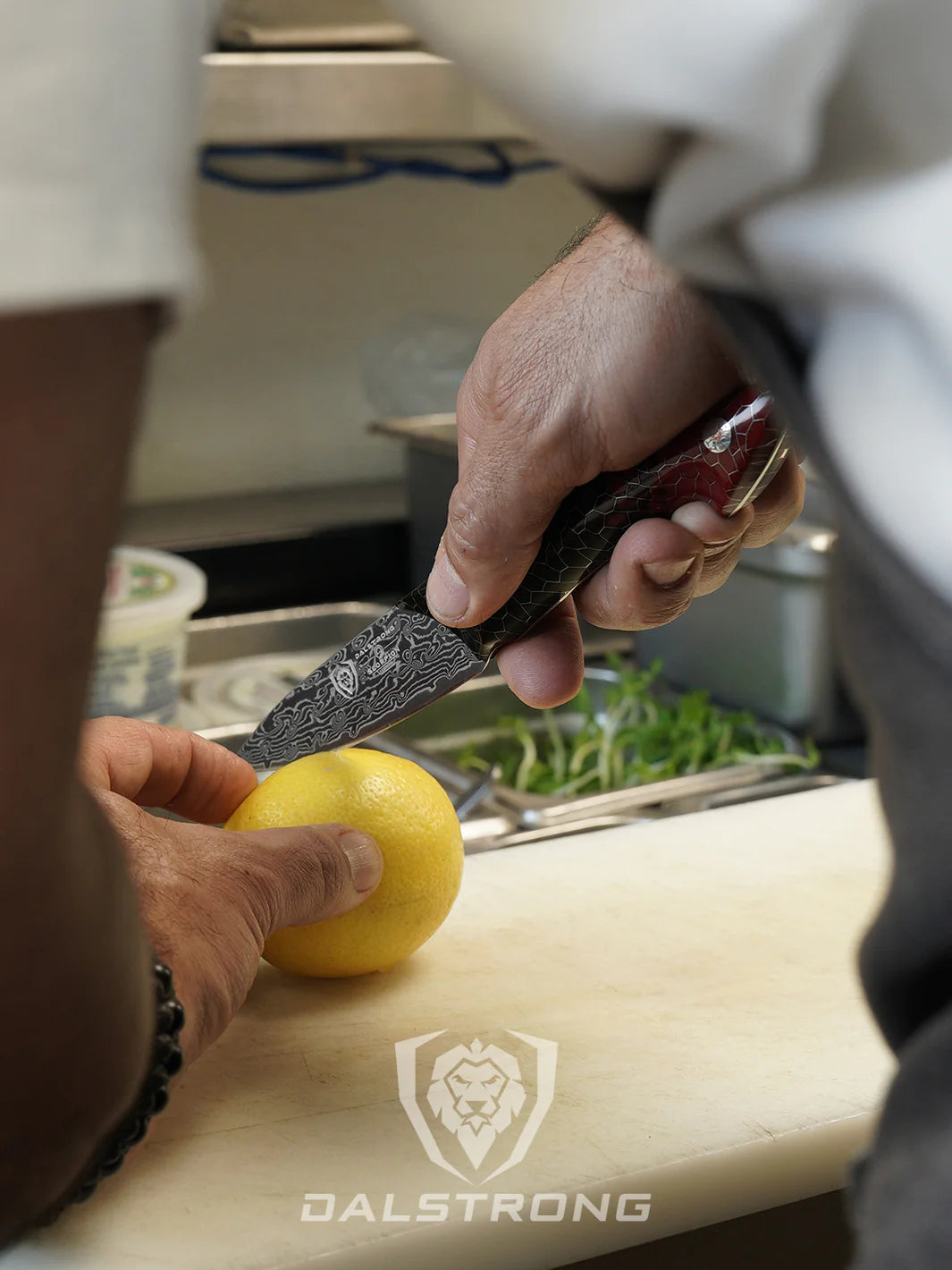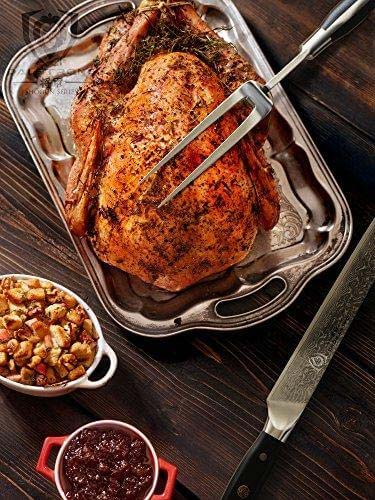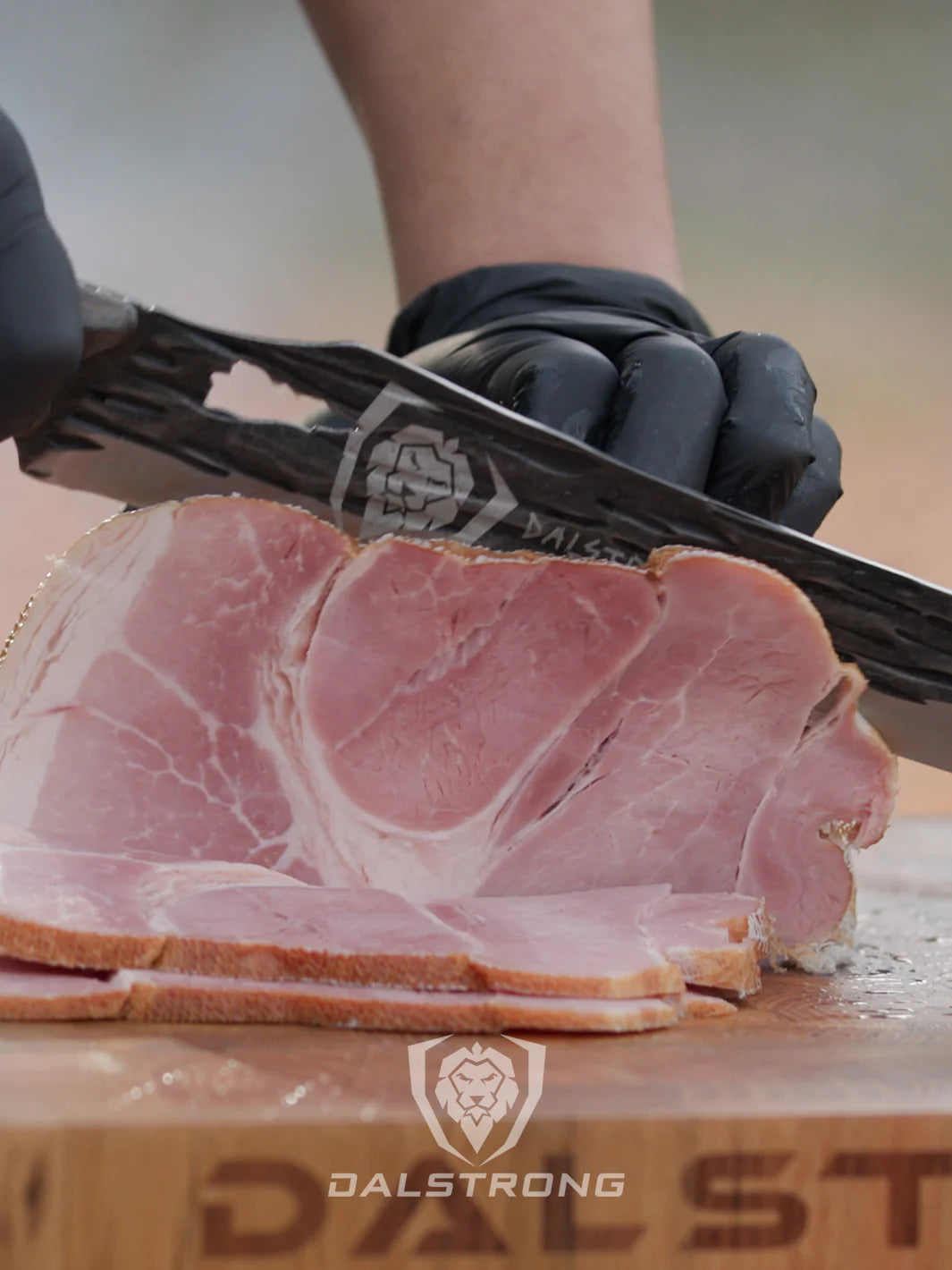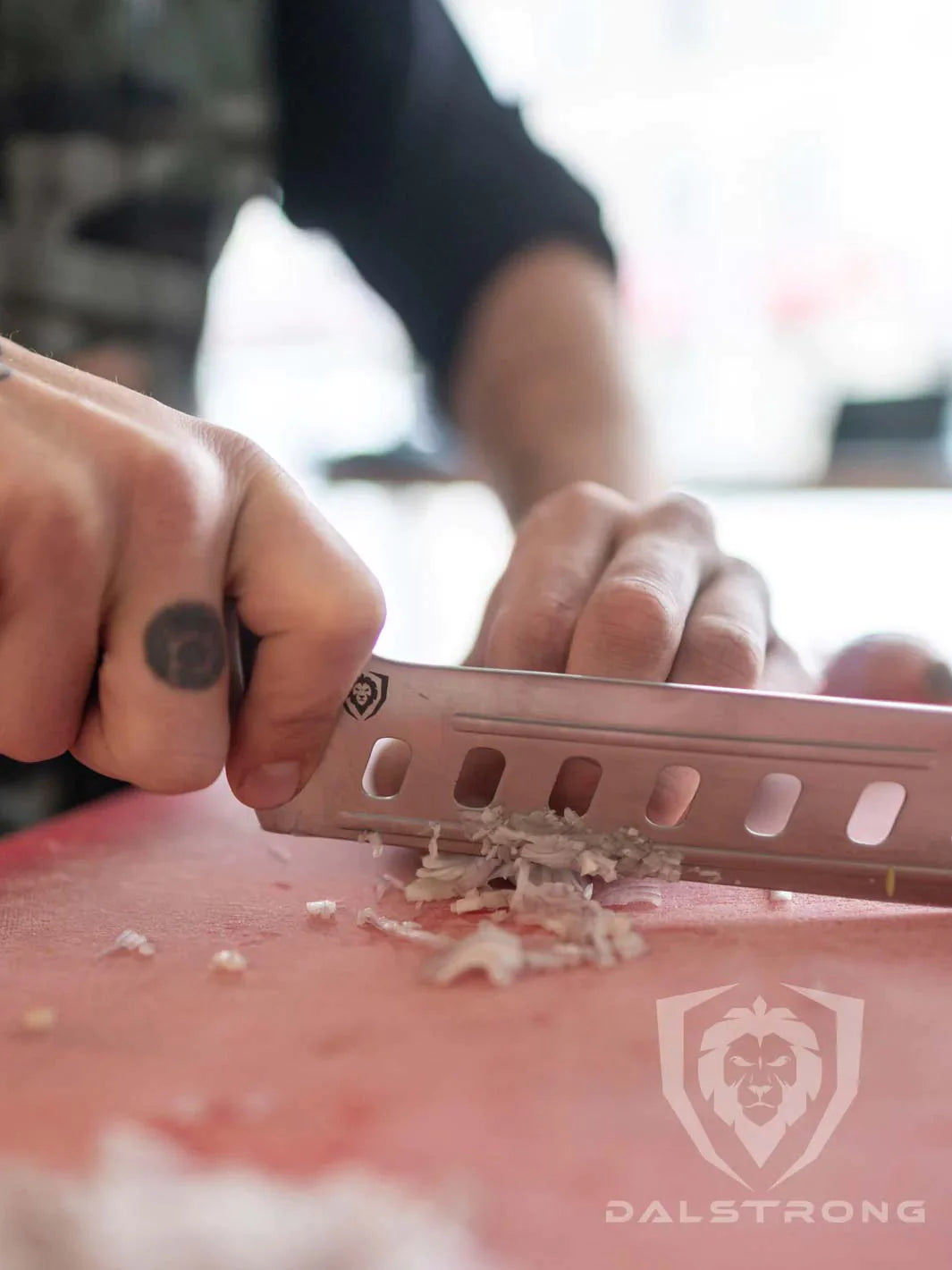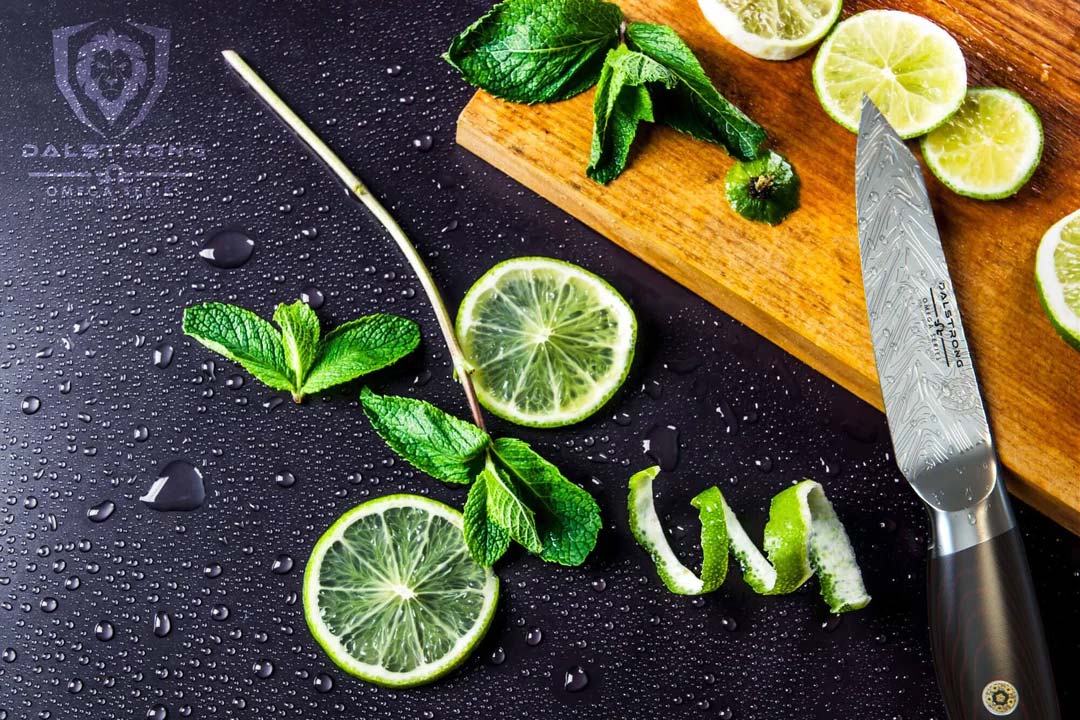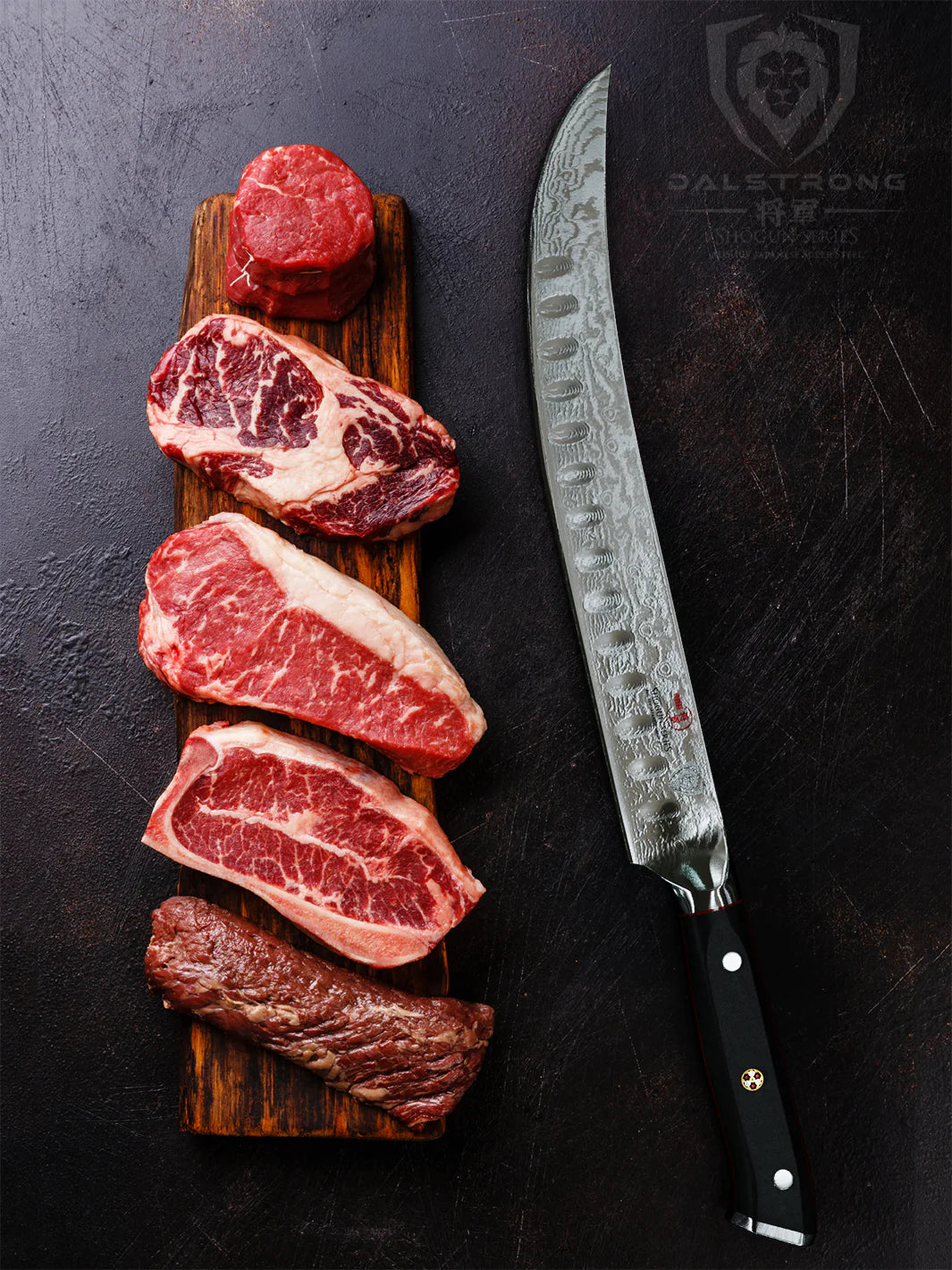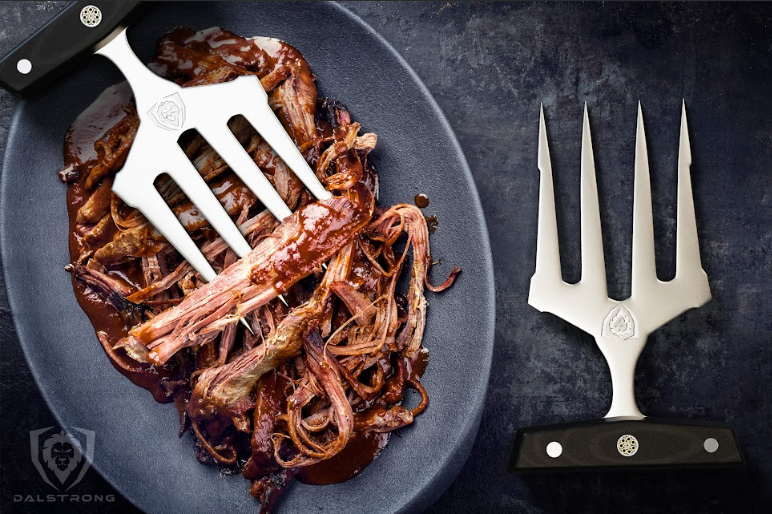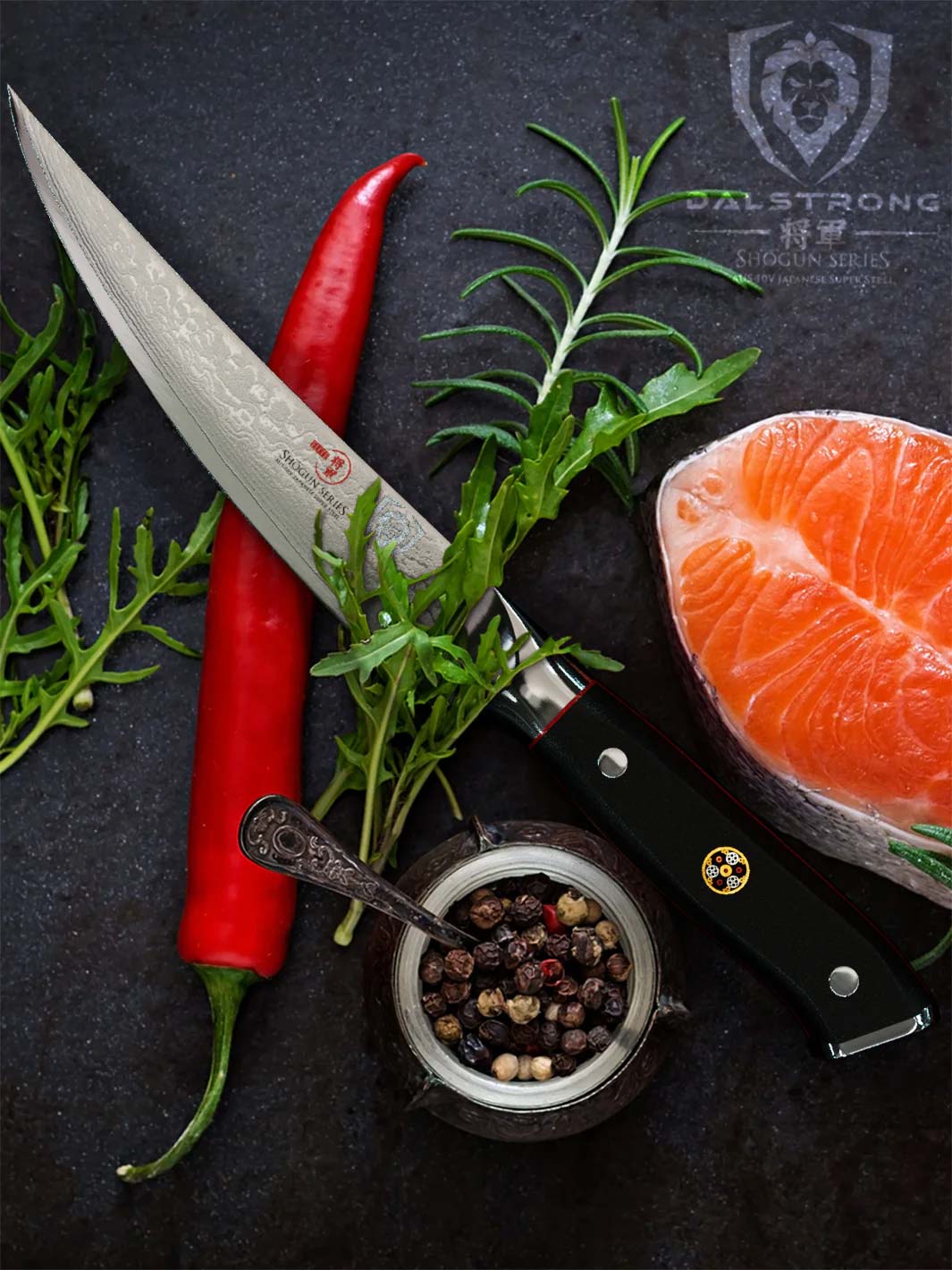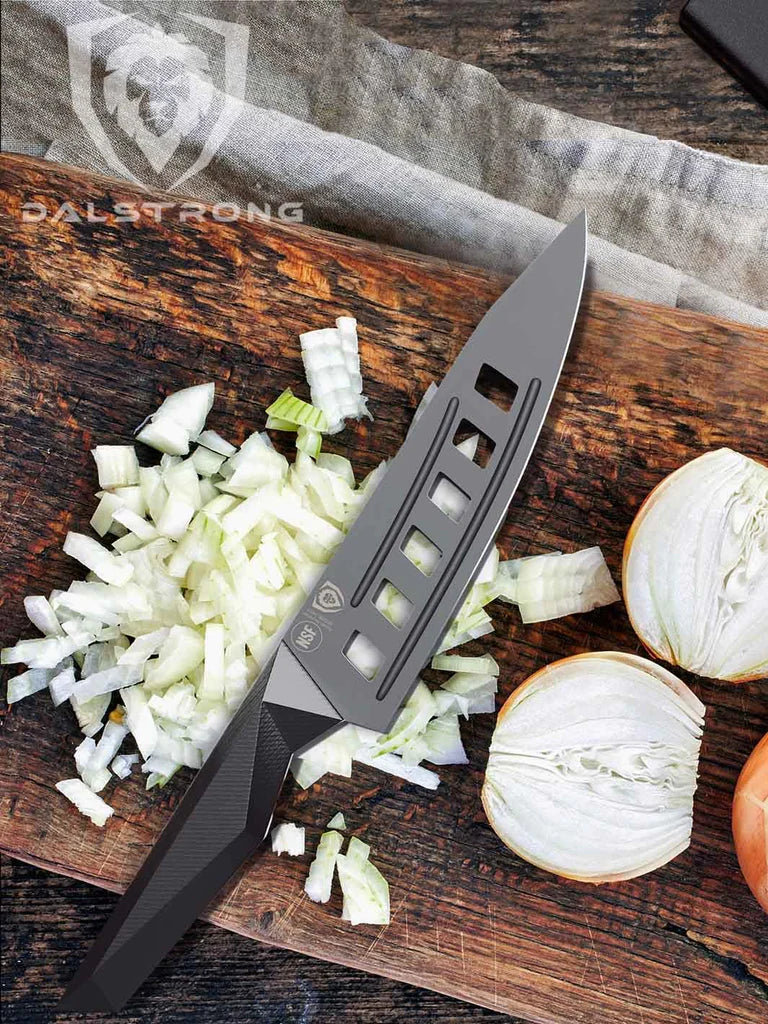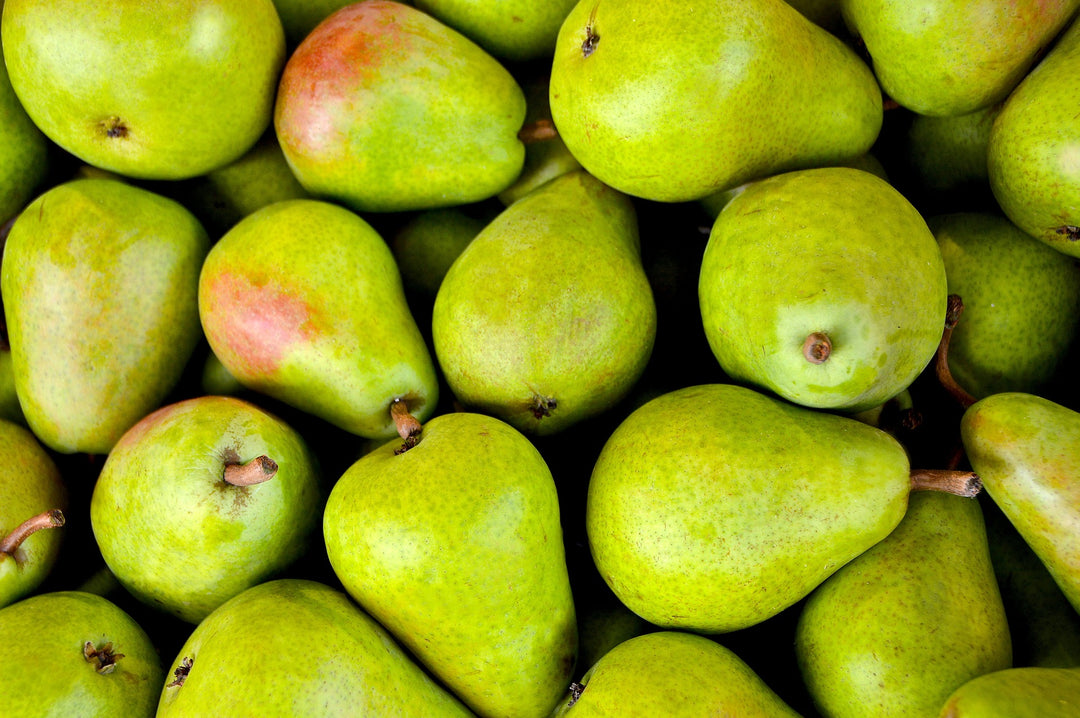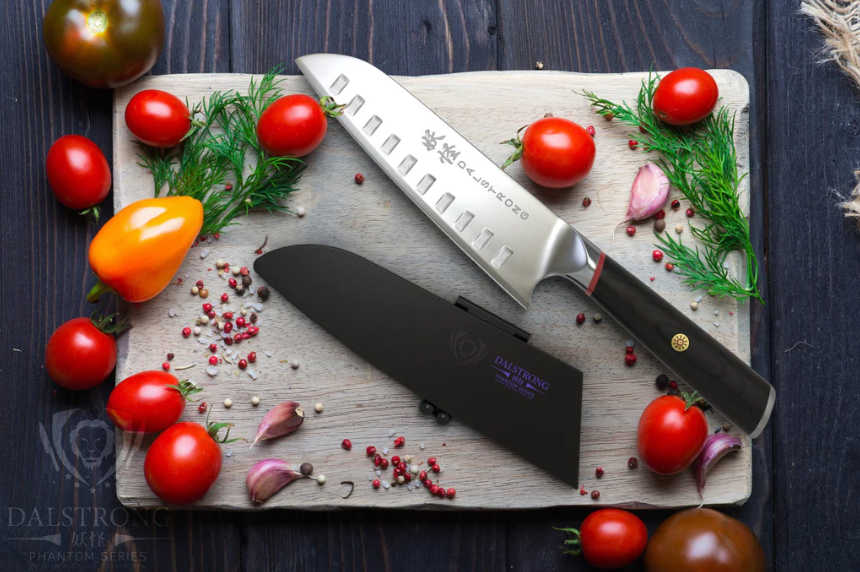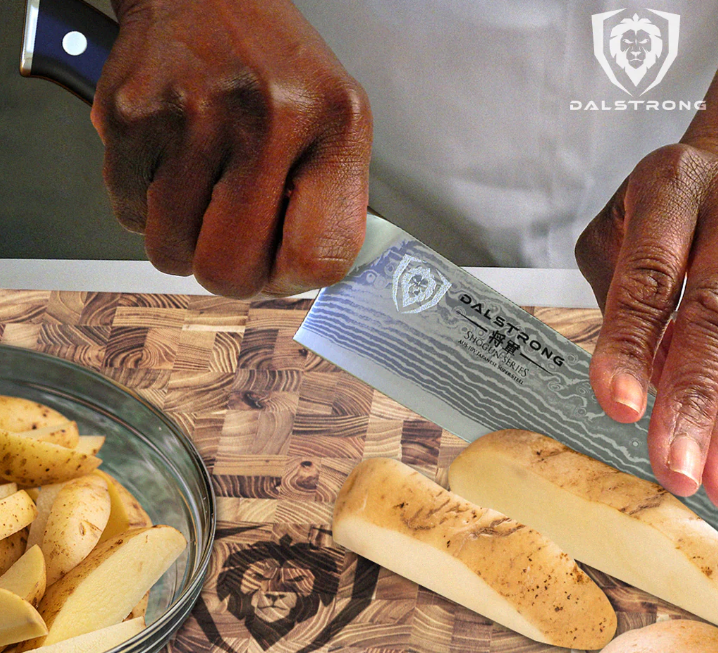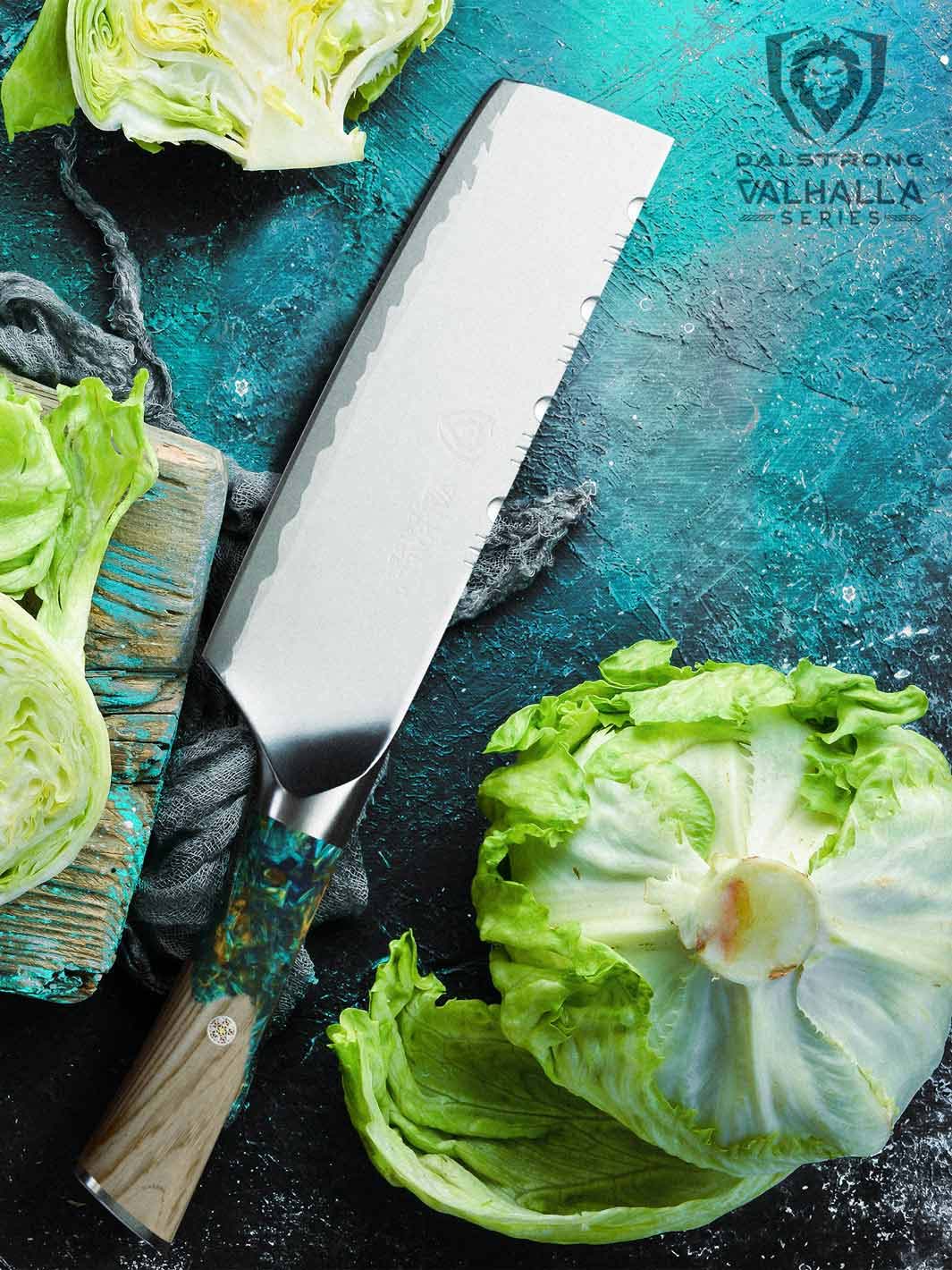Nigiri vs. Sashimi Sushi : What’s the difference and which is better?
Delta Wolf Series Fillet Knife 6"
Nigiri vs. Sashimi Sushi : What’s the difference and which is better?
Sashimi and Nigiri are both among the most famous forms of Japanese cuisine, to the point that it’s very common to confuse the two names when talking about sushi. But the fact is that nigiri sushi and sashimi are two different things (one of them might not even be sushi at all) and it’s worth knowing what makes each one of them so great.
Today you will learn the major differences between Nigiri vs. Sashimi. You will also learn about Maki Sushi and the differences between Nigiri vs. Maki sushi.
1. What Is Nigiri?
Gladiator Series Paring Knife 3.5"
Nigiri is one of the purest and most traditional manifestations of Japanese sushi. Nigiri is a small rice ball (or rice mound) consisting of vinegared rice (a.k.a sushi rice or sticky rice) and a piece of raw fish on top. Sweet, salty and tasty flavor, nigiri sushi has it all.
Usually, it’s raw fish (salmon, tuna, mackerel...) but you can also find shrimp nigiri (the shrimp is cooked) and eel nigiri (the eel is usually grilled).
The sushi chef may add sweet soy sauce or wasabi between fish and rice in the nigiri bite. Nigiri is a very popular type of sushi.
2. What Is Sashimi?
 Yanagiba Sushi Knife 10.5" | Shadow Black Series | Dalstrong ©
Yanagiba Sushi Knife 10.5" | Shadow Black Series | Dalstrong ©
This may be a surprise (It was for me, I’ll admit) but sashimi is not actually considered sushi. The one essential, non-negotiable ingredient in sushi is rice (not fish) and sashimi does not contain rice at all.
Sashimi consists of thin slices of raw meat serviced without rice, which is usually strips of raw fish (salmon, tuna, shrimp or octopus) but not necessarily fish, it can be other meats as well.
Some people dip sashimi in soy sauce or add a fish topping of their choice. It can also be served with pickled ginger, wasabi, daikon radish or even avocado. The quality and level of detail put into making sashimi, sometimes results in a higher price than nigiri.
3. What Is Maki?

9.5'' Yanagiba Slicer | Phantom Series | Dalstrong ©
When we, westerners, think of sushi, what comes to mind is a black roll containing sushi rice and other things. This black roll is called maki or makizushi, probably the most popular forms of sushi on our side of the world.
In short: maki is a roll where the ingredients (rice, raw fish or cooked fish, other seafood like shrimp, vegetables, cream cheese) are all wrapped up inside a sheet of “nori” or dried seaweed.
The major difference of Nigiri vs. Maki is that Nigiri features the seaweed inside sushi rolls and Maki features the seaweed outside sushi rolls.
4. What’s The Difference Between Nigiri and Sashimi?
Valhalla Series Fillet Knife 6.5"
Let's take a look at the differences between Nigiri vs. Sashimi and Nigiri vs. Maki.
Ingredients
- Nigiri is made of rice and fish.
- Sashimi is made only of meat (either fish or another). It doesn’t contain rice.
- Maki is made of rice, nori and other ingredients (vegetables, fish, other meats and diverse ingredients)
Presentation
- Nigiri is served as a "ball" or "rice mound" with two halves: rice and fish. There is traditionally no fish topping.
- Sashimi is served as thin slices or strips of raw fish or meat (no rice)
- Maki comes in a long roll or tube, cut into pieces.
Sushi
- Nigiri sushi is the most traditional and a very popular type of sushi in Japan.
- Maki is the best-known type of sushi outside of Japan.
- Sashimi is not technically sushi, but is served in sushi restaurants.
Eating
- Use your hands to eat Nigiri sushi.
- Use chopsticks to eat sashimi.
- Use either chopsticks or your bare hands to eat maki (it’s always best to go with your hands).
5. What Are The Best Knives For Preparing Nigiri And Sashimi?
Yanagiba
The Yanagiba knife features a long, narrow and thin blade, beveled on one side only. Specially designed for sushi and sashimi, this is the perfect knife for filleting raw fish like salmon or tuna with clean and precise cuts. The edge is so sharp that no pressure or force is needed to cut the fish.
If you’re thinking of getting the ultimate sushi knife, here’s 3 recommendations:
1. Yanagiba Slicer 9.5" | Single Bevel | Phantom Series
“A sashimi slicing master” is a fair description. You can also use it for nigiri sushi and other meats other than fish. The blade is perfect for slicing raw fish. The super sharp 9.5” blade is engraved with the Japanese kanji for ‘phantom’ or ‘ghost’. Single-bevel, as the Japanese tradition dictates.
PROS:
- The scalpel-sharpness of the blade will retain the edge for longer.
- The precisely tapered blade with high levels of chromium guarantees durability and stain-resistance.
- Besides fresh fish, you can also use it for slicing steak, pork, ham and other raw meats to perfection.
- The blade is thicker than average, providing stronger, yet easy cuts.
CONS:
- If you want a more versatile Japanese knife consider other types, like the Santoku.
- Depending on your personal preference, you might want a longer blade.
- Extra sharpness means extra precautions.
2. Yanagiba Knife 10.5" | Gladiator Series
The best of both worlds? This Yanagiba knife combines classic Japanese characteristics with high-carbon German steel and the Gladiator Series’ versatility and robustness. The length of the blade is ideal for cutting in a single stroke.
PROS:
- The longer blade allows you to cut through the fish or meat on the first slide; without tearing anything apart or sacrificing flavor.
- Minimal friction also maximizes the taste of meat, which is essential in sashimi and nigiri preparation.
- The ergonomic handle provides a comfortable pinch grip and maximum comfort.
CONS:
- Japanese knife purists might prefer traditional Japanese steel (like the Yanagiba from the Phantom Series) rather than German steel.
- Considerably longer than a typical paring knife, you may need some time to get used to it.
3. Yanagiba & Sushi Knife 10.5" | Single Bevel | Ronin Series
Are you serious about sushi? Then go for this one. It has 3 grinds: The Shinogi surface for effortless, ruthless cuts; The Urasuki for smoother slicing with its concave surface; and the Uraoshi, which optimizes performance and strength.
PROS:
- The 3-grind design will make this your most precious and powerful sushi knife.
- The pattern on the blade is so breathtakingly beautiful we have to count it as a pro (It’s not only about the looks: but it also prevents rice from sticking to the blade)
- Premium Japanese high-carbon steel, tempered with liquid nitrogen.
- Beautiful, comfortable octagon-shaped handle.
CONS:
- Because this is an ultra-premium knife, the price is higher than the other series.
- This is a long, thick and heavy knife; which might not be everyone’s cup of tea.
Kiritsuke
The Kiritsuke is a multi-purpose knife (not a common feature in Japanese knives) widely used for sashimi and vegetable prep. It is a combination of the Yanagiba knife mentioned above (perfect for filleting fish), and a vegetable knife.
In many sushi restaurants, only the head sushi chef can use one as a form of establishing status. The original Kiritsuke knife has a single-sided edge (the flat side prevents rice from sticking to the blade), although nowadays there are more versatile models. A few examples:
4. Kiritsuke Chef's Knife 8.5" | Gladiator Series
This versatile, double-bevel Kiritsuke knife is used to cut fish, shrimp, vegetables or rice rolls, making it ideal for preparing different varieties of sushi. Its sturdy, heavy-duty blade made of German high-carbon steel resembles a sword at the tip end.
PROS:
- Perfect for preparing tons of vegetables using rocking-cuts, thanks to the geometry of the blade.
- The blade height makes food preparation more comfortable.
- Owning this knife is like having a powerful chef’s knife; but with the prestige, beauty and status associated with Japanese knives.
CONS:
- Double-bevel means more versatility; but if you want to honor the Japanese style completely you might want to look at single-bevel Kiritsuke knives.
- Kiritsuke models from the Quantum 1 series or the Shadow Black series offer more eccentric, surprising looks.
5. Kiritsuke Chef's Knife 9.5" | Phantom Series
This is a chef's knife with a kiritsuke shape, featuring a long, narrower blade from ice-tempered steel. This all-purpose knife has been designed with the tasks of slicing fish and chopping vegetables in mind, which makes it ideal for preparing nigiri or sashimi.
PROS:
- Narrower width for more agility.
- The blade is longer than other models, perfect for push cuts.
- Forged from Japanese steel with high levels of chrome for more resistance and durability.
- The traditional Japanese D-shaped handle allows for greater control.
CONS:
- Some might find the shorter blades more maneuverable.
- The single bevel might be comfortable for right-handed users, but not so much for the left-handed.
- The engraving on the blade, beautiful as it is, requires extra cleaning precautions.
6. Kiritsuke Chef's Knife 8.5" | Crusader Series
The Kiritsuke 8.5" chef's knife brings the special aesthetic of the Crusader Series, but with the feeling of an ancient sword. The full groove also reduces friction and prevents rice from sticking to the knife.
PROS:
- Clean and precise cuts.
- Excellent edge retention.
- The steel structure makes it a very resistant knife.
- The fact that it is a single piece makes it more hygienic.
CONS:
- The unconventional design might not be what you’re looking for in your first sushi knife.
- The handle, while better for some, is very different from traditional handles. The grip needs time getting used to.
Santoku
Ok, I know! A santoku is not a sushi knife. However, in practical terms, they can be used at home to prepare ingredients for sashimi and nigiri; and the best part is, you can use it for a lot more than that! “Santoku bōchō” translates to "three virtues" or "three uses” which may refer to its three main applications: slicing, chopping and dicing; or the three foods for which this knife is mainly used: fish, meat and vegetables.
7. Santoku Knife 7" | Quantum 1 Series
You won’t have a problem preparing sashimi or makizushi with this elegant Santoku from the Quantum series, designed for slicing, chopping and filleting with minimal effort and maximum control and efficiency.
PROS:
- This is an extra durable knife forged from high-carbon American steel.
- “Effortless prep”, the Quantum 1 motto, will come in handy when preparing elaborate tuna or salmon sushi rolls for your guests.
- The unique blade pattern prevents drag and allows for greater efficiency.
CONS:
- This knife is a western version of a Japanese classic. But if you prefer the whole deal, look for a knife with a Japanese blade.
- The price is a bit higher than other Dalstrong Series.
- You will need to use a cutting board and not just cut on any surface, if you want to protect the edge.
8. Santoku Knife 5" | Gladiator Series
All the power in one compact piece. The shorter blade and handle are perfect for precision cutting, like filleting salmon or tuna for nigiri, salmon sushi, and sashimi.
PROS:
- Great value for the price
- As a good santoku, you can use it for slicing, dicing and chopping anything you need.
- Strong where you need it to be, and flexible when you need it to be.
- The handle is ambidextrous and ergonomically designed.
CONS:
- If you’re looking for a more “premium” look, consider our other Santoku recommendations.
- This model is a bit heavier than traditional Japanese knives.
9. Santoku Knife 7" | Shadow Black Series
At first, the mysterious and sophisticated style of this black knife seems to be the absolute highlight; but then you realize it stands out for its efficiency, performance and maneuverability when it comes to cutting meat or shrimp, slicing fish and chopping vegetables.
PROS:- The 16-18º edge has been hand-sharpened so that your fish and vegetables are perfectly cut for nigiri sushi or sashimi.
- Exceptional grip that fits perfectly in your hand.
- Visually beautiful and out-of-the-ordinary.
CONS:
- This bold, ultra-modern design might be a little too different from everything else you own in your kitchen.
- The black coating requires extra care when sharpening.
6. Frequently Asked Questions
What is nigiri sushi?
Nigiri sushi is a traditional Japanese dish consisting of hand-pressed vinegared sushi rice with a slice of raw fish on top, usually tuna, salmon, or other seafood. It is typically served in pairs and may be accompanied by a dab of wasabi between the rice and fish. Nigiri sushi showcases the natural flavors and textures of the ingredients.
What is the difference between sushi and nigiri?
Nigiri and sashimi are both Japanese dishes featuring slices of raw fish on top, but they differ in preparation and presentation. Nigiri consists of hand-pressed sushi rice topped with thinly sliced raw fish, while sashimi consists of only raw fish, without any rice. Nigiri showcases a blend of flavors, while sashimi highlights the pure taste and texture of the fish itself.
Is nigiri called sushi?
Yes, nigiri is a type of sushi. It is a traditional Japanese dish consisting of hand-pressed vinegared sushi rice topped with a slice of raw fish or other ingredients. Nigiri sushi is one of the many popular and iconic forms of sushi, often served in sushi restaurants and enjoyed worldwide for its delicate and flavorful combination of rice and fish.
What is difference sushi and sashimi?
Sushi and sashimi are both Japanese dishes, but they differ in their composition. Sushi involves vinegared rice combined with various ingredients like raw fish, vegetables, and more, often wrapped in seaweed. Sashimi, on the other hand, consists of thin slices of raw fish served without rice, focusing solely on showcasing the quality and flavor of the fish.
Why is sashimi not sushi?
Sashimi is not sushi because it lacks a key component: rice seasoned with vinegar. Sushi traditionally includes vinegared rice as a base, while sashimi consists solely of thin slices of raw fish without rice. Sashimi emphasizes the purity and taste of the fish itself, while sushi combines various ingredients like fish, rice, and vegetables, often wrapped in seaweed.
What is the difference between sushi sashimi and nigiri?
Sushi, sashimi, and nigiri are all elements of Japanese cuisine. Sashimi is sliced raw fish or seafood served on its own. Sushi involves vinegared rice combined with various ingredients, including raw fish, vegetables, or cooked items. Nigiri is a specific type of sushi consisting of a small hand-formed mound of rice topped with a slice of raw fish or other ingredients. Sashimi highlights the raw meat, while sushi and nigiri incorporate it into a comforting rice base.
Is sashimi just sushi without rice?
Yes, sashimi is essentially raw fish served without rice. Unlike sushi, which includes vinegared rice as a base, sashimi focuses solely on showcasing the quality and flavor of the fish itself. It's a Japanese dish that highlights the freshness and texture of the raw seafood, often served in thin, delicate slices and accompanied by soy sauce, wasabi, and pickled ginger.
Shop Dalstrong Sushi Knives Today
Written by Eva ContrerasFood & travel writer based in Buenos Aires. Superpowers include relentless curiosity and high tolerance to spicy foods.


























































































































